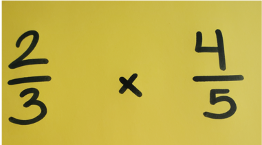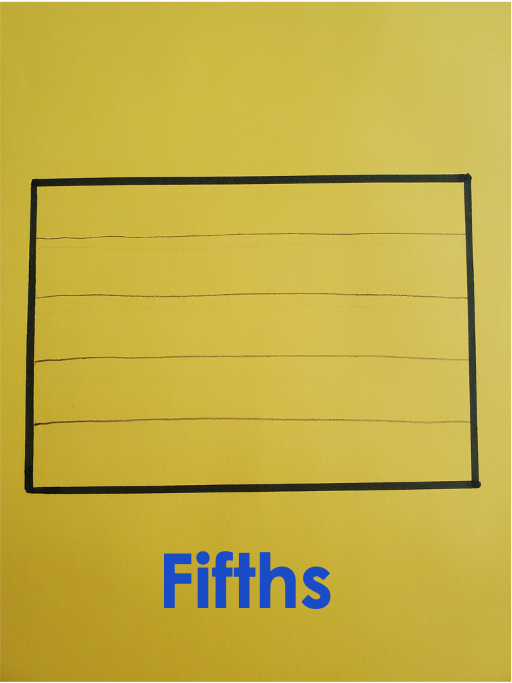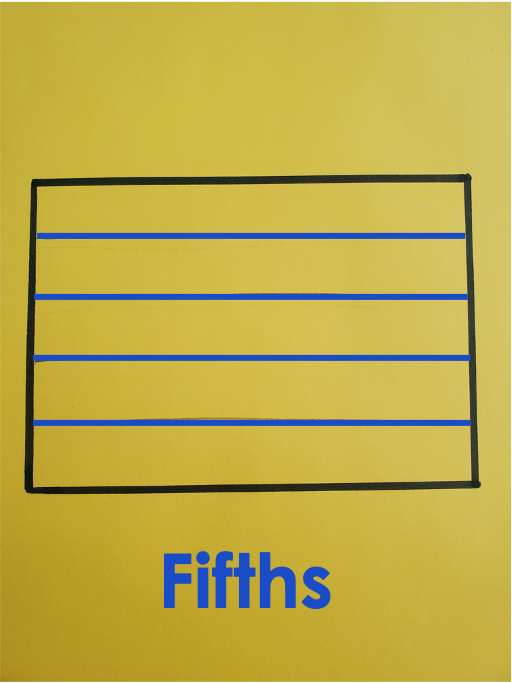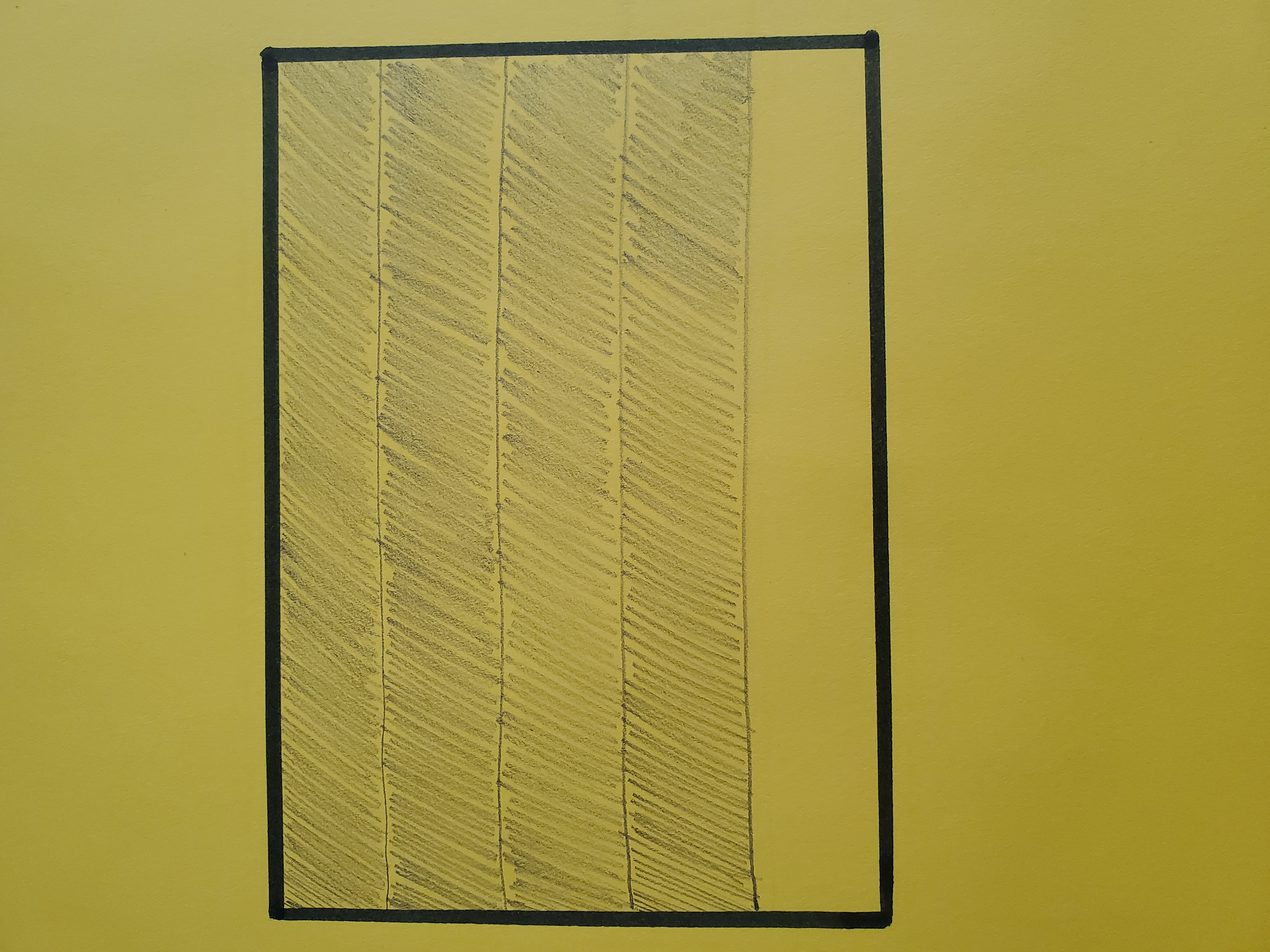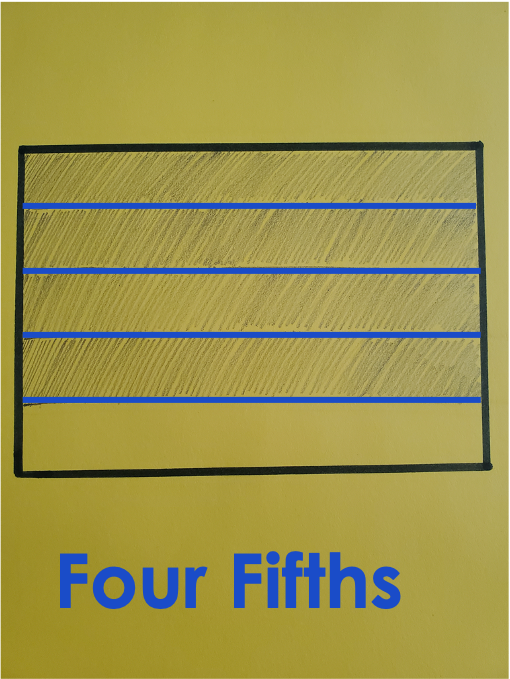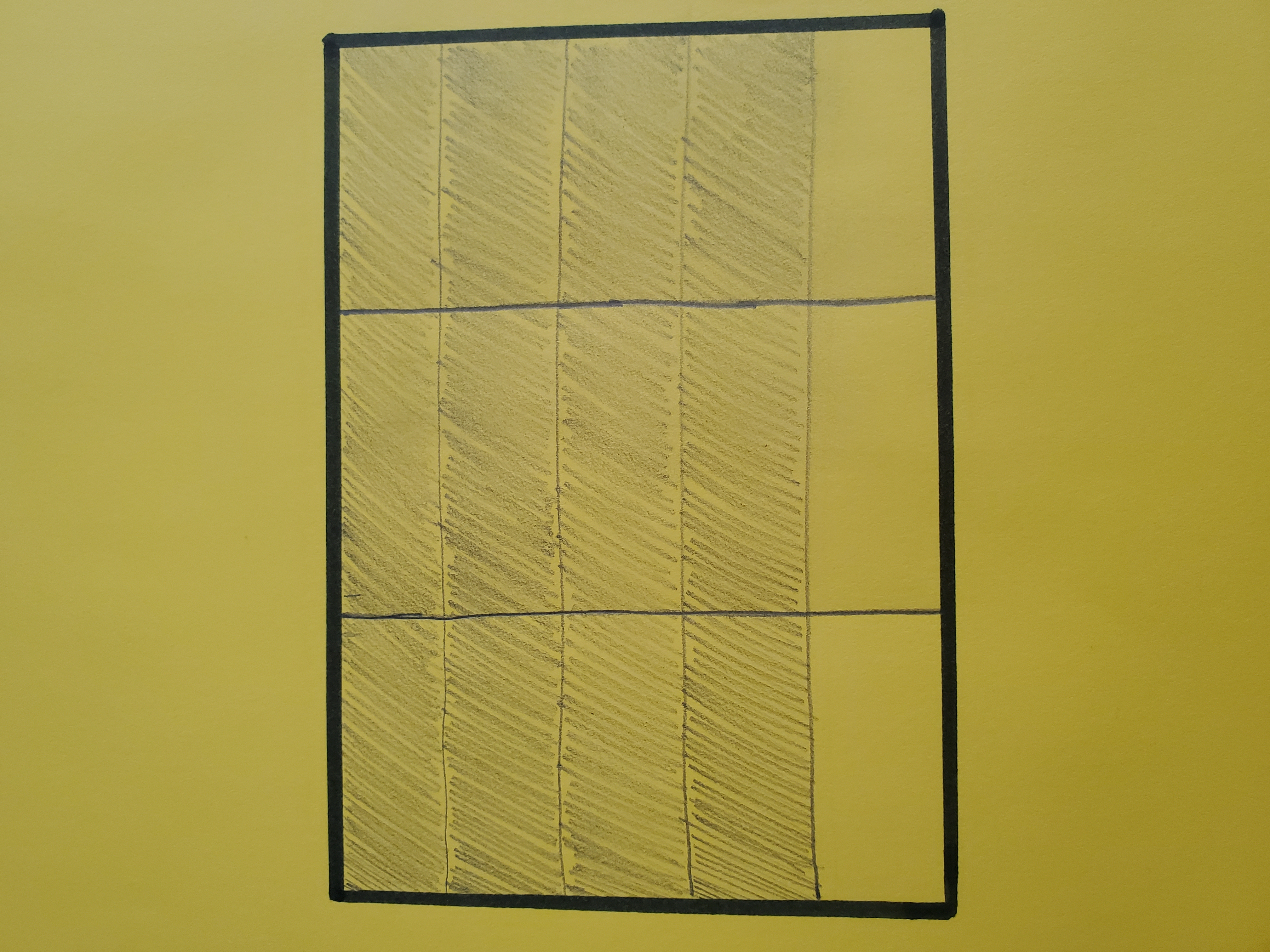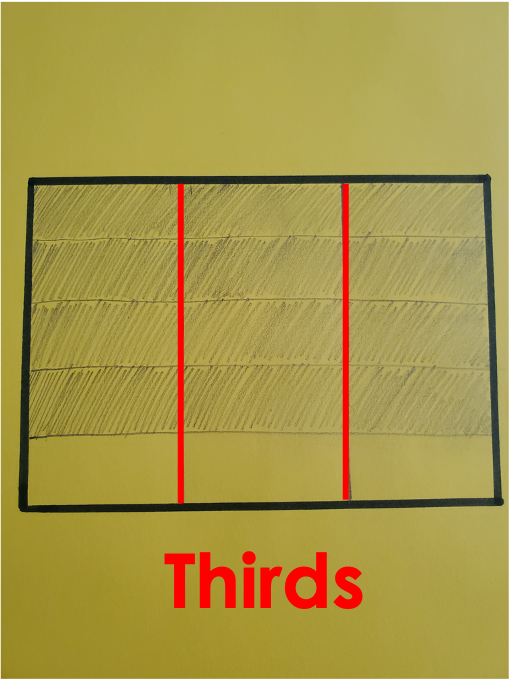How do you multiply fractions?
What does it mean to multiply two fractions?
When you multiply two fractions, such as ⅔ x 4/5, you are actually taking a piece of a piece or a part of another part. We know that fractions equal to less than one, are just that – less than one whole. In other words, a piece/part of a whole of something.
The expression ⅔ x ⅘ means that you need to see what ⅔ OF ⅘ is. If you have ⅘, which is less than a whole which would be 5/5, how much would ⅔ of your ⅘ be?
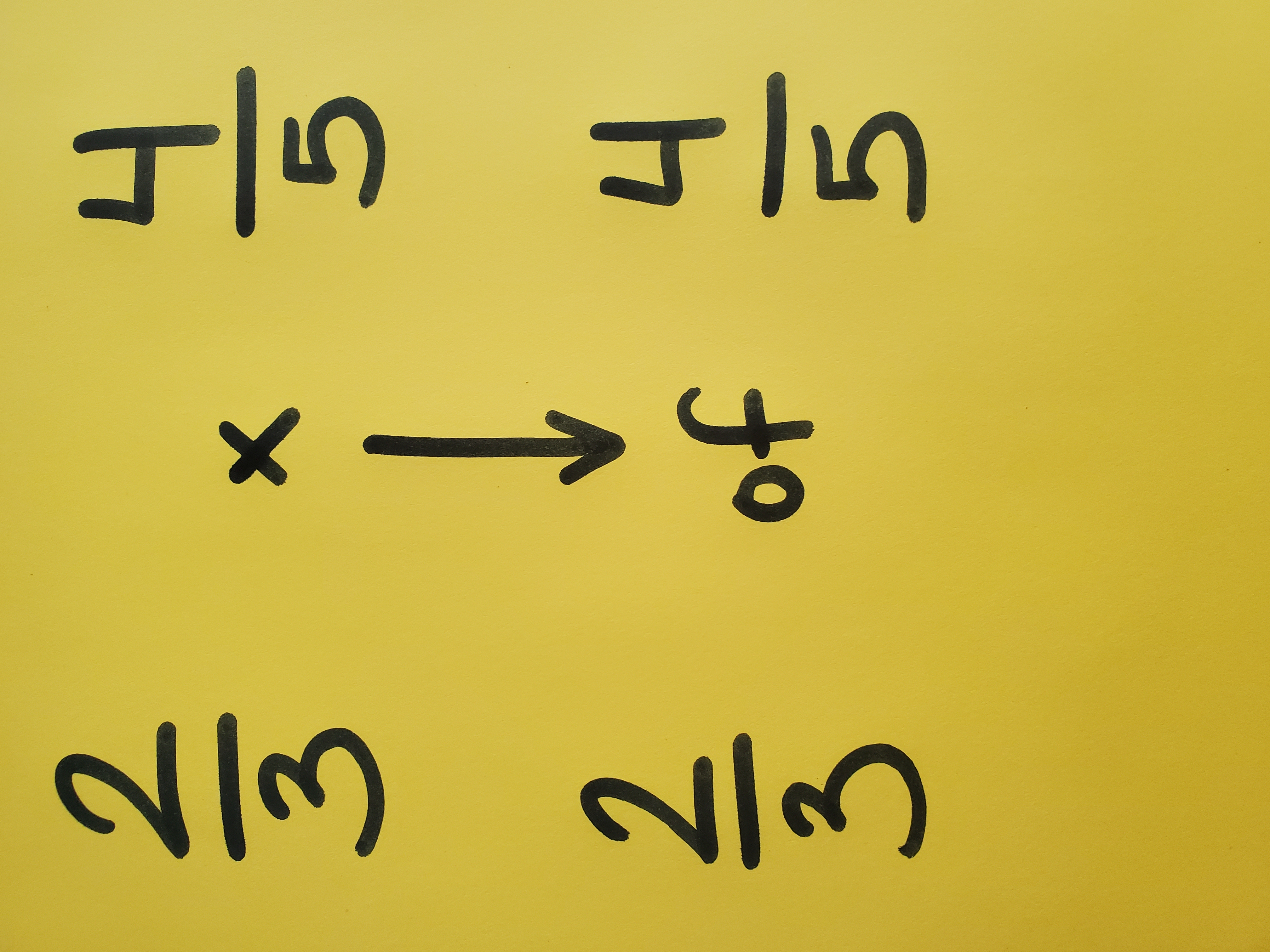
So you don’t have a whole of something, you only have ⅘ of something.
Moving forward in this post, let’s refer to your ‘something’ as a rectangular cake.
How do you multiply two fractions using picture models?
Let’s look at a model of the rectangular cake.
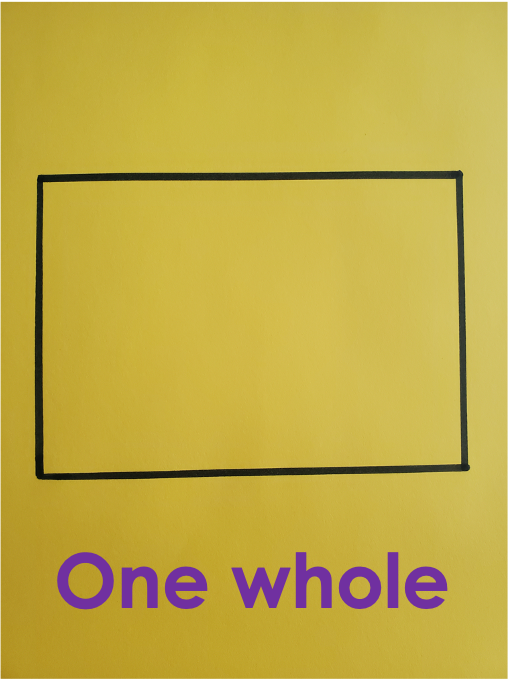
The model shows one whole cake.
Let’s partition the cake into fifths since the fraction that represents what we already have is ⅘.
Shade in 4 of the fifths to show how much of the cake we have.
Now we will partition the cake into thirds because the amount we will want to focus on is ⅔ of what we have. (Remember, what we have is ⅘ of a cake, not one whole cake.)
Shade in 2 of the thirds to represent ⅔.
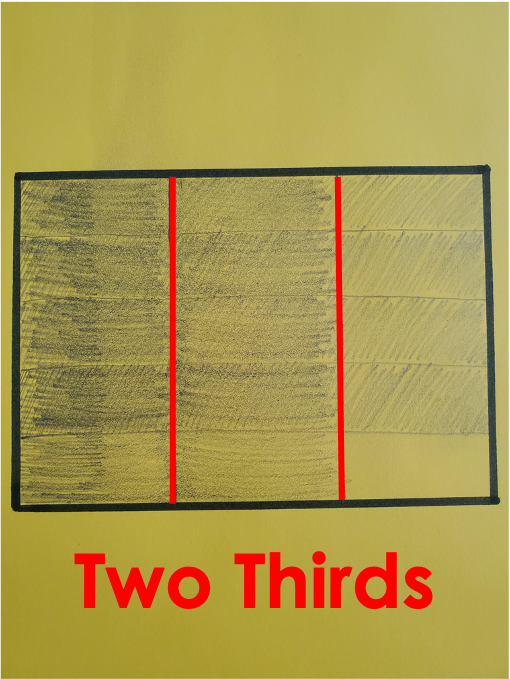
This is the part where we determine what our new fraction is or how much ⅔ of ⅘ equals.
As a reminder, the numerator (top part of the fraction) is the part of the model that is counted (shaded in or double shaded in) and the denominator is the total number of pieces/parts in the whole. So the total number of pieces/parts in one whole cake.
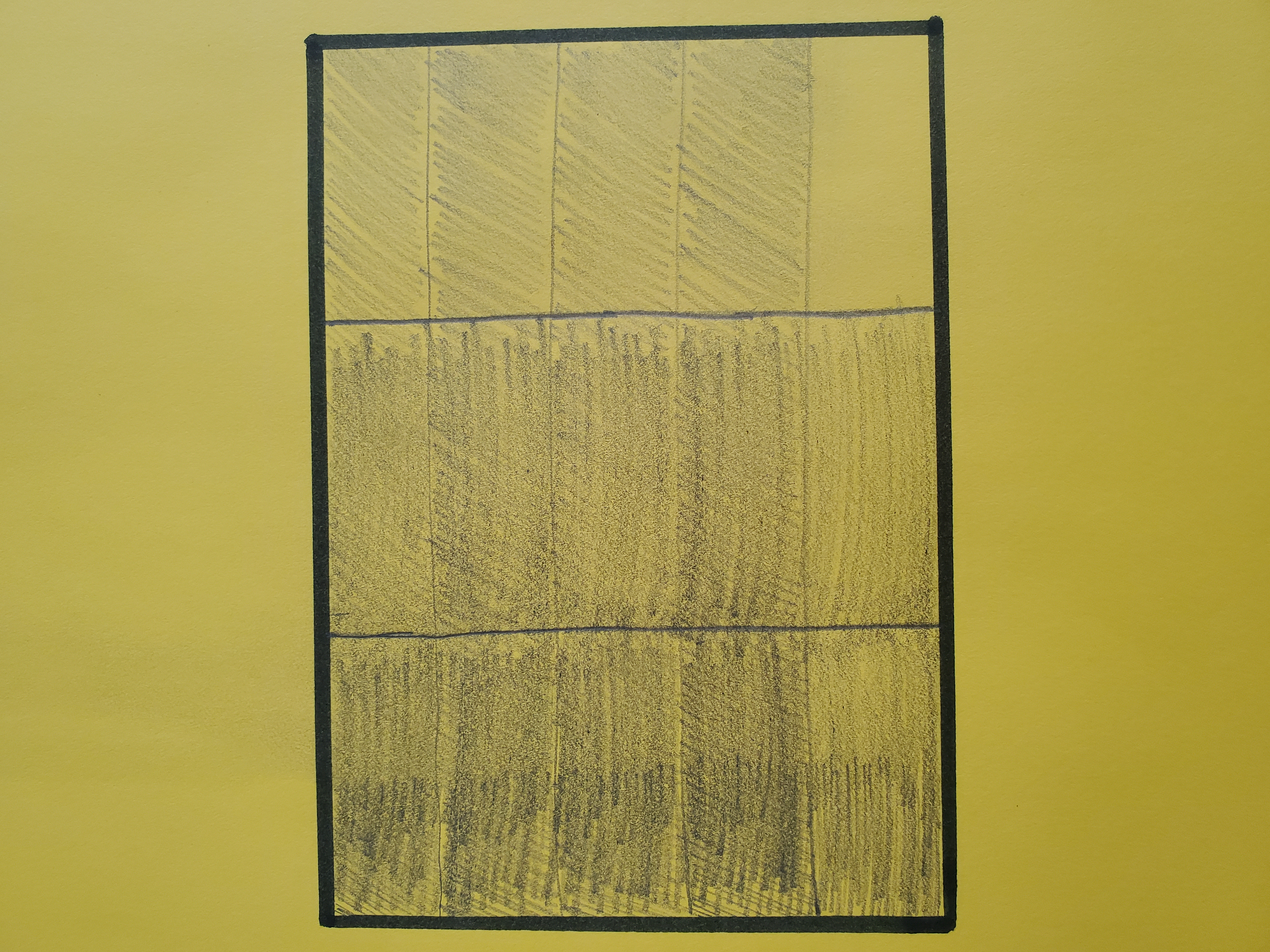
When we count the total number of pieces/parts in the whole cake (if it were still a whole cake) there would be 15 total pieces.
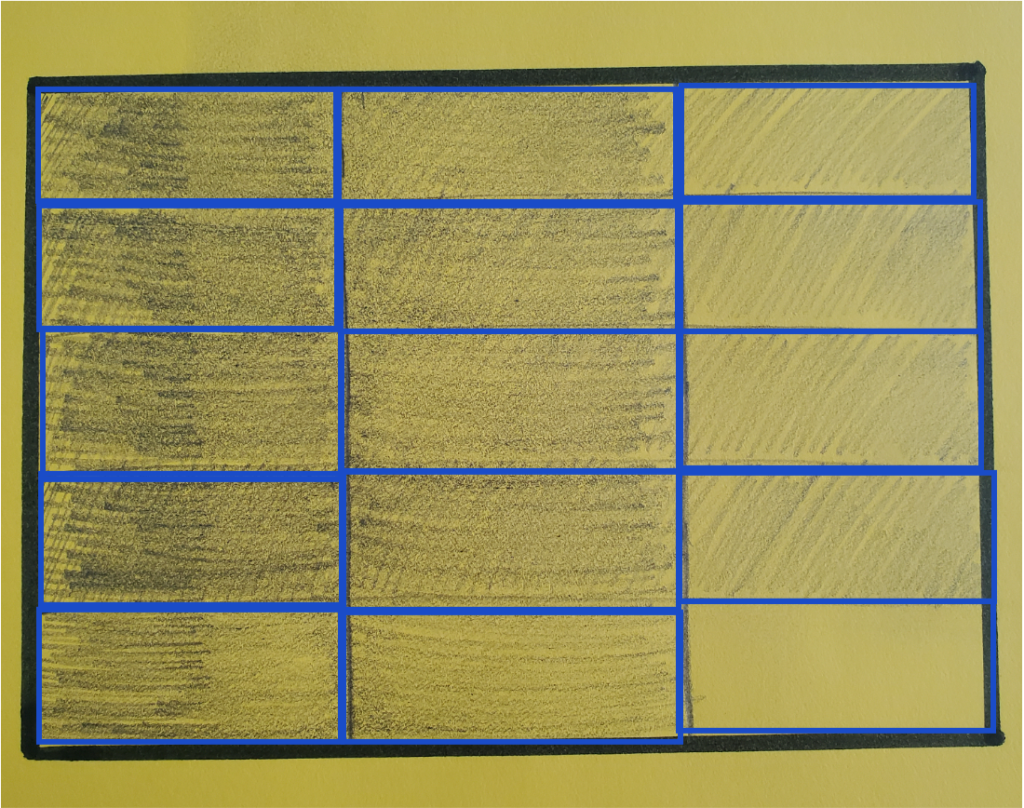
The amount of pieces of the total 15 that shows ⅔ of ⅘ is 8 pieces. When you look at the model, notice the parts that have been shaded in twice.
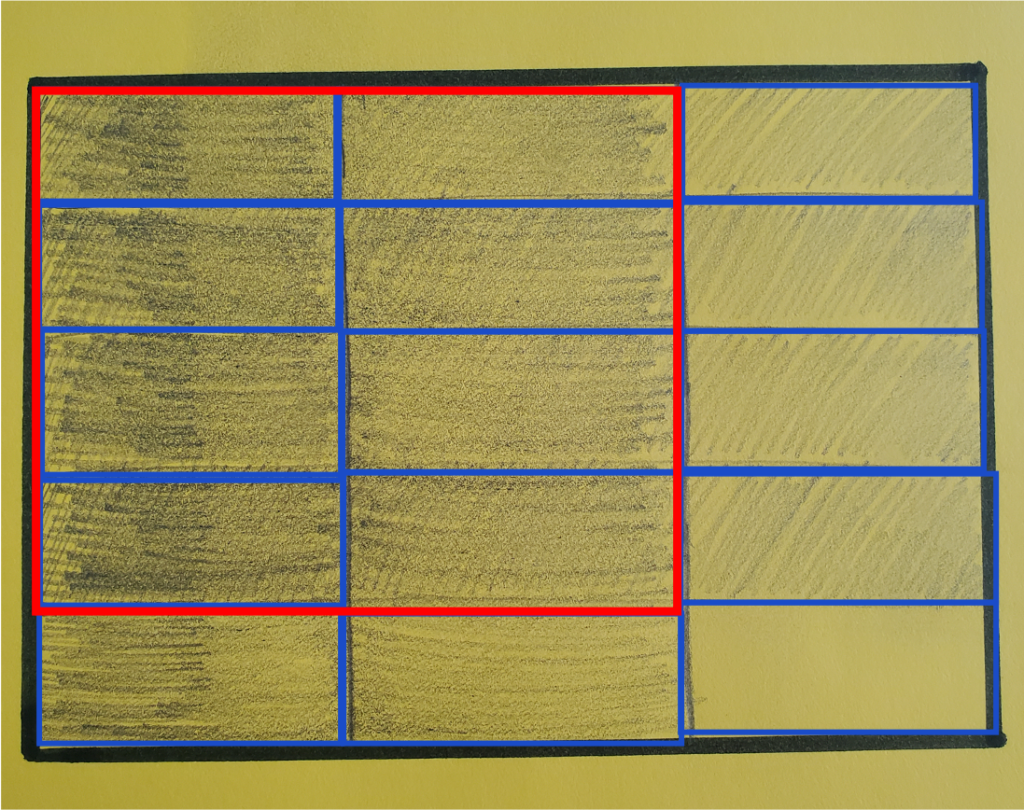
This shows ⅔ (two thirds) OF (or out of) ⅘ (four fifths).
⅔ of the ⅘ of cake that we had is 8/15.
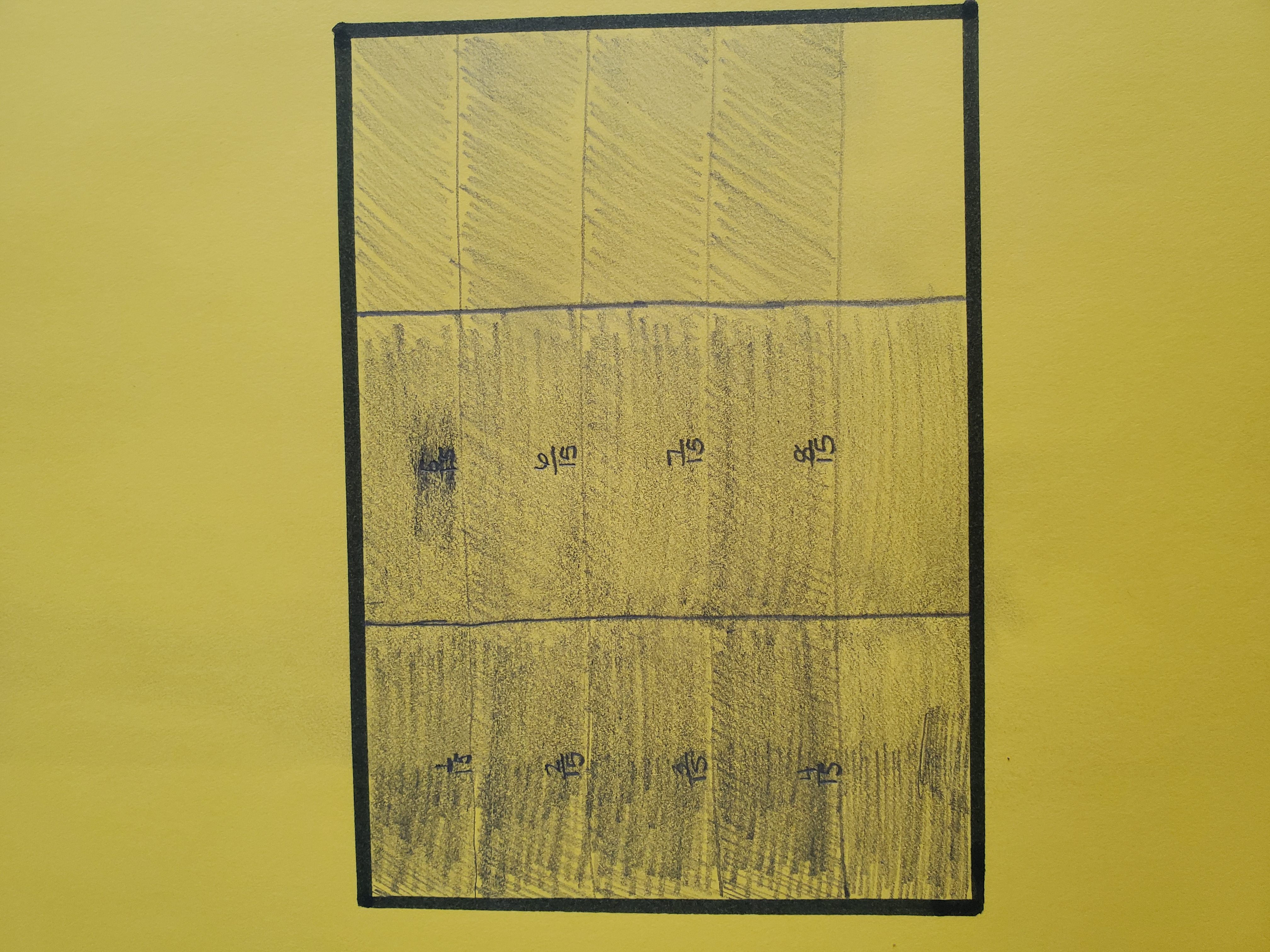
Modeling how to multiply two fractions is a great way to give students a good foundation for what happens when you are multiplying fractions, or taking a part of another part.
How do you multiply two fractions using equations?
Using an equation to multiply two fractions without a model is of course a faster, more efficient way to solve the problem. When teaching this skill to students, use caution with going straight to the equation without giving meaning to what happens when you multiply two fractions.
Let’s use the same expression from the previous example: ⅔ x ⅘
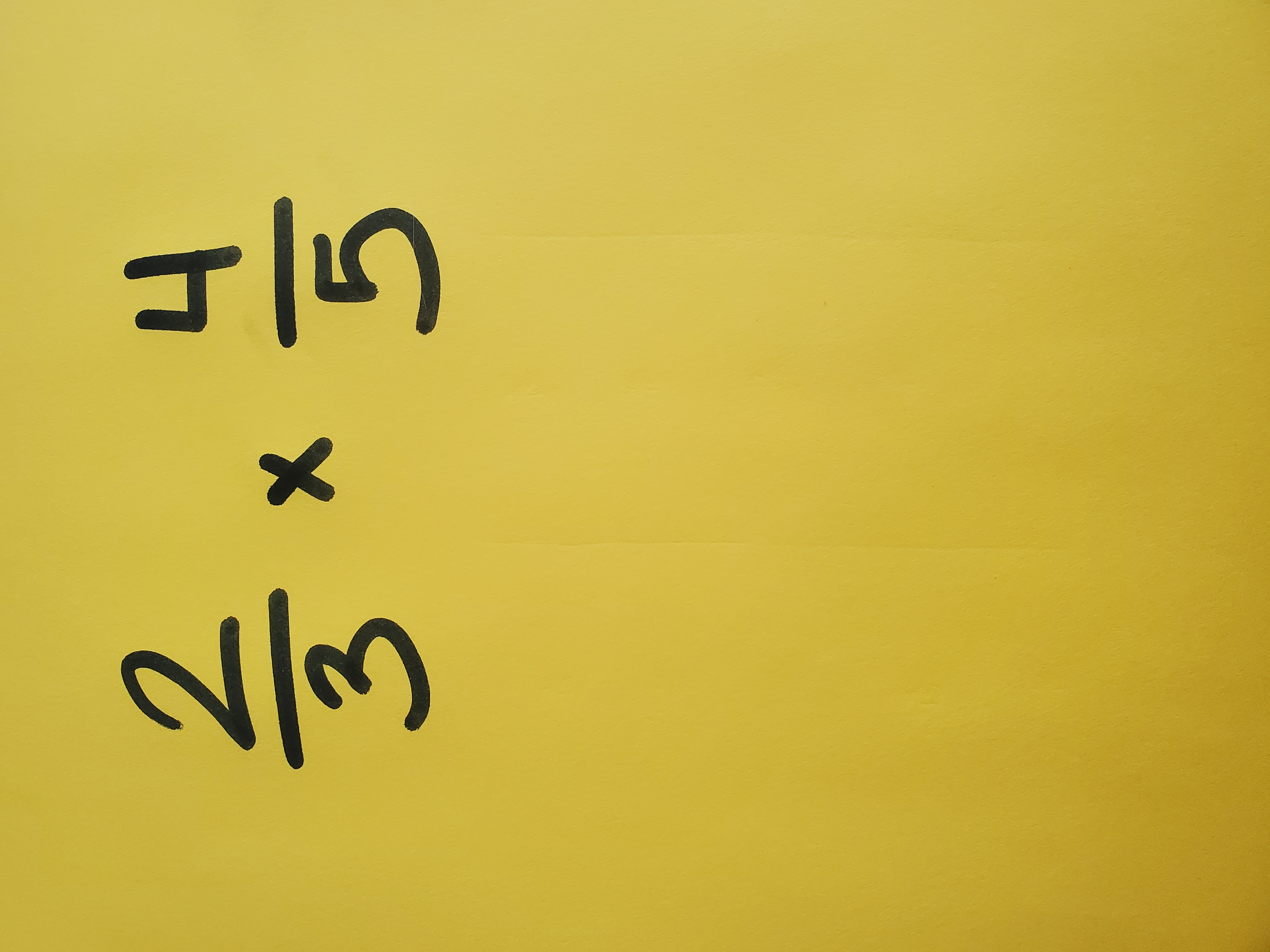
Start by multiplying the two numerators together (2 x 4), the product is the new numerator.
Next, multiply the two denominators together (3 x 5), the product is the new denominator.
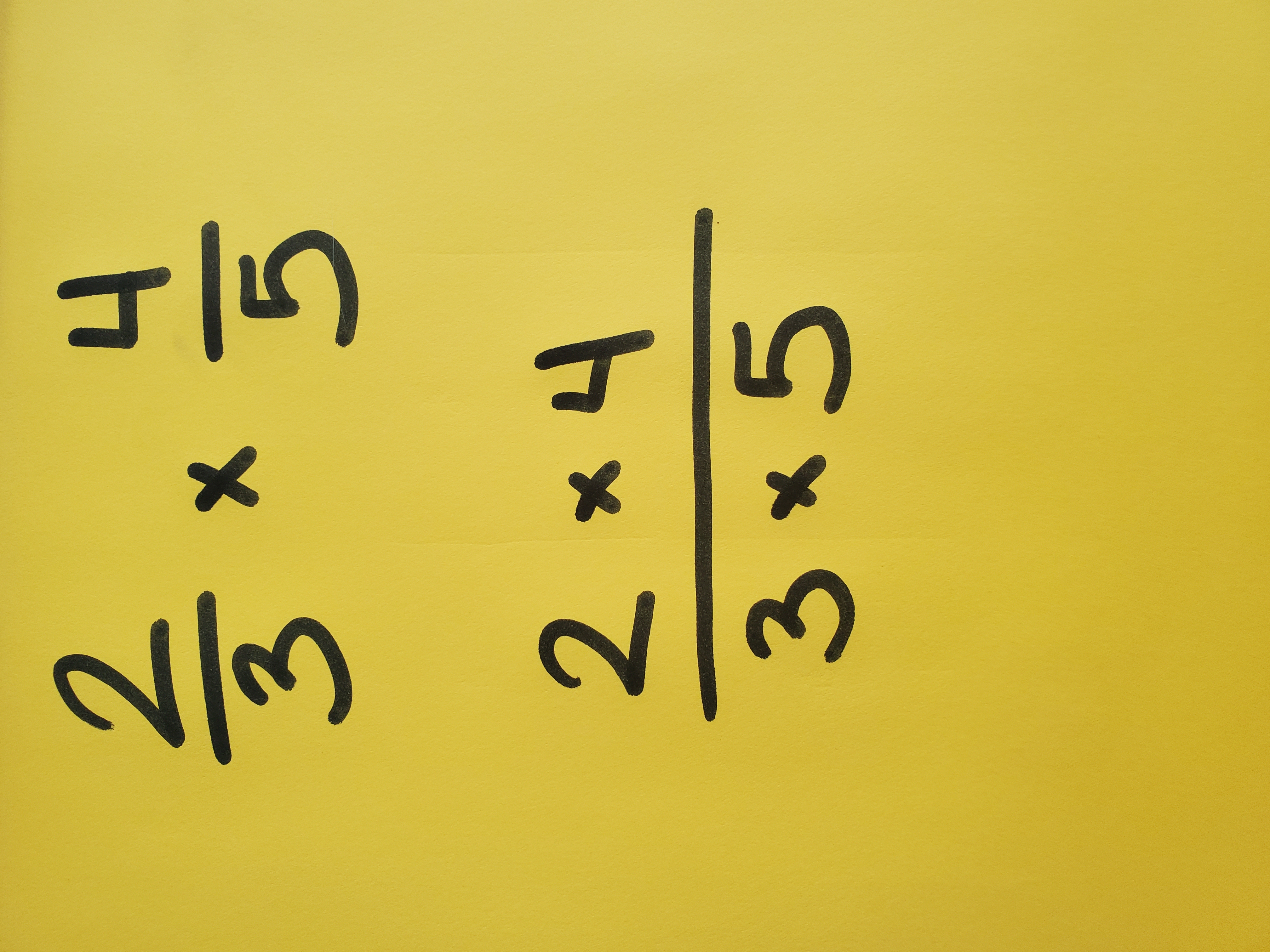
And there you have your total product: ⅔ x ⅘ = 8/15.
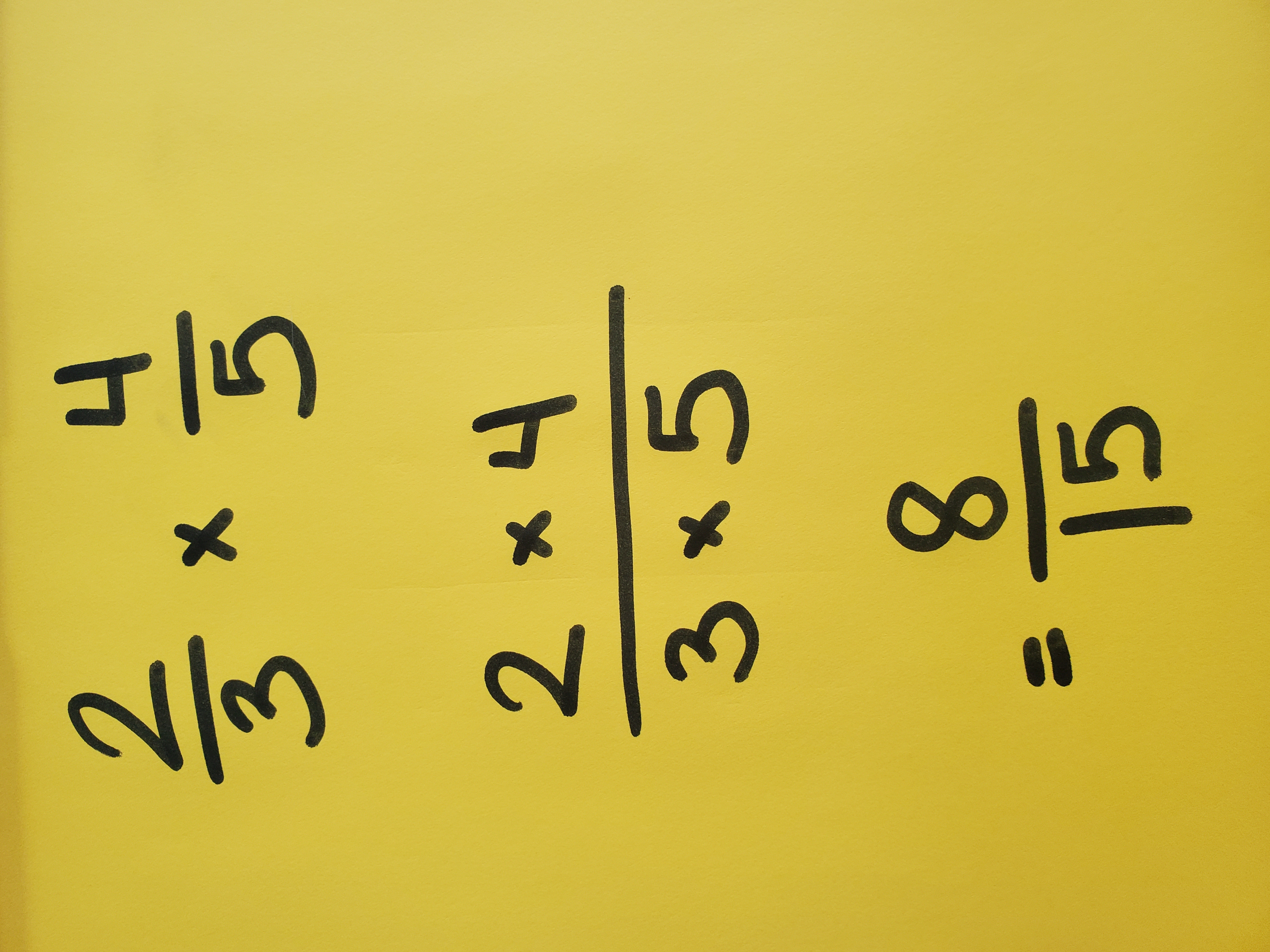
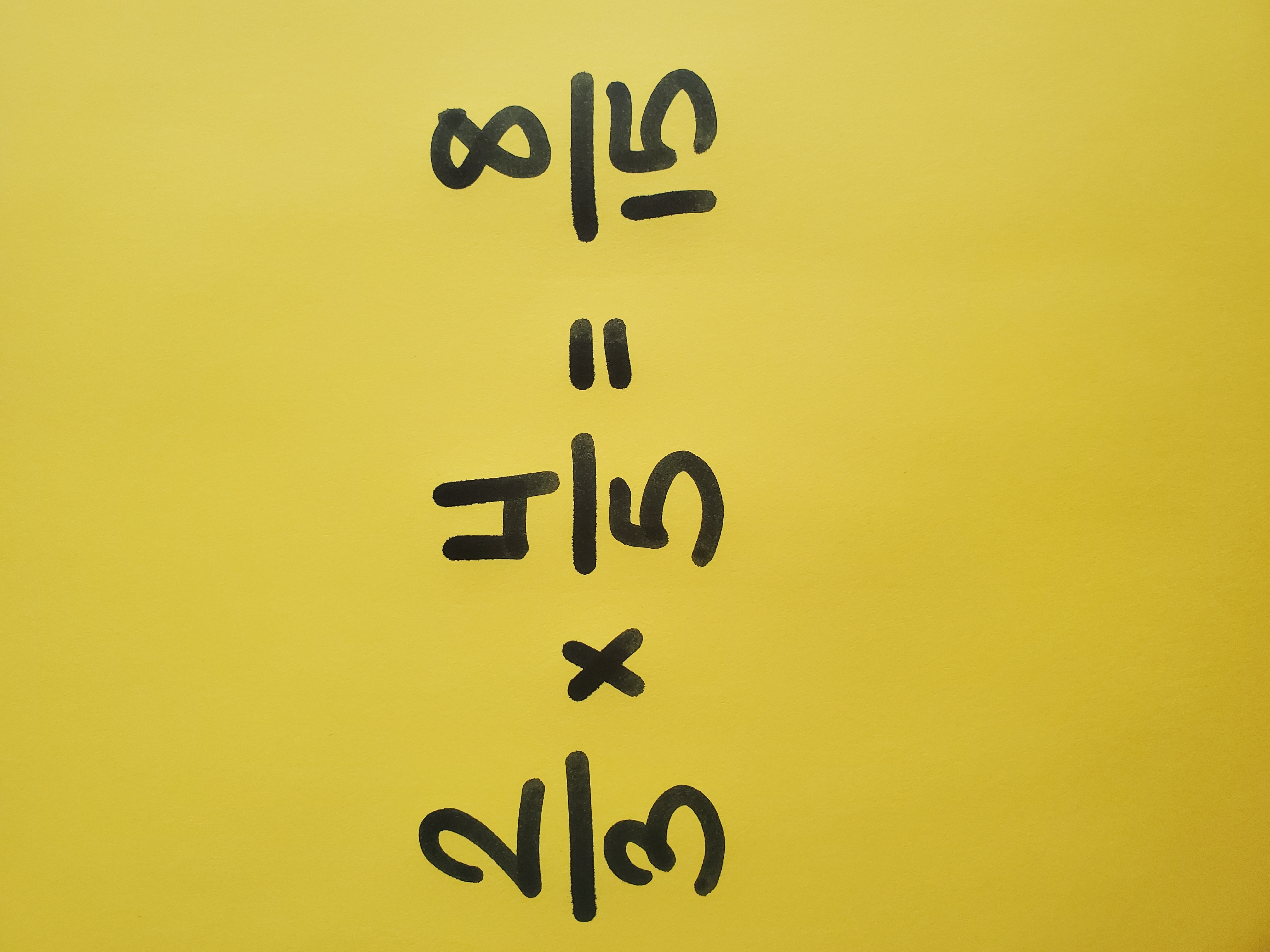
See, this is definitely a more efficient strategy for multiplying two fractions.
Again, I want to emphasize not rushing to this strategy when teaching students, but to use as a final phase in understanding how to multiply two fractions.
When practicing with multiple examples using the model, many students discover how to solve using the equation all on their own. And self discovery by students is always a great gift!

